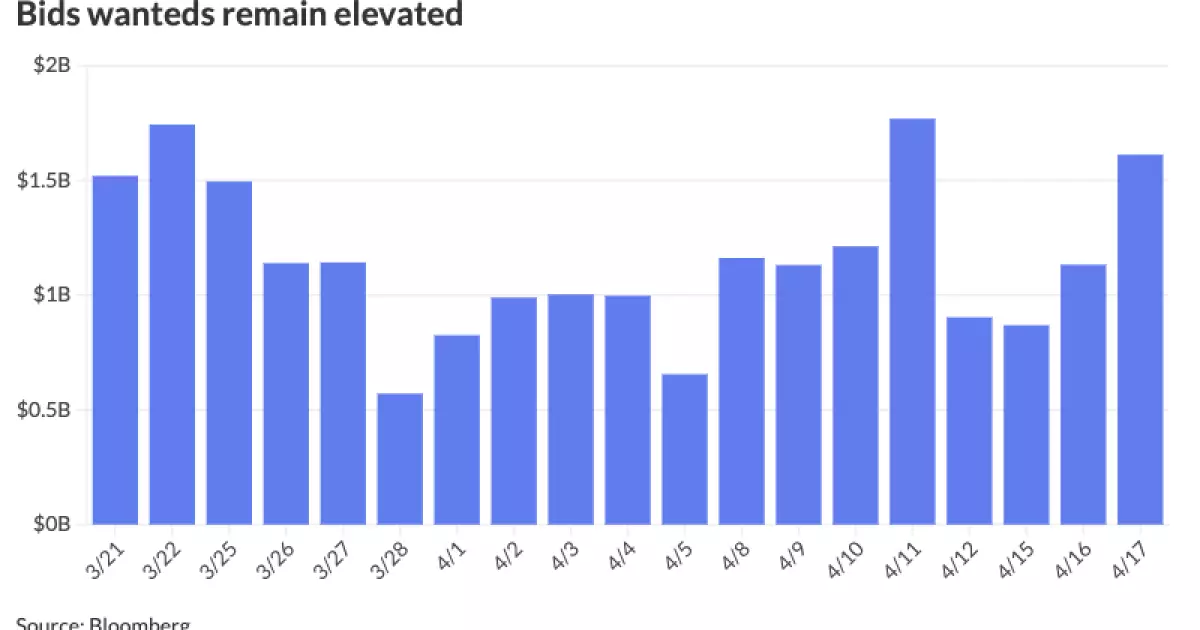In the world of municipal bond mutual funds, 2024 has seen its fair share of challenges. Recent reports from LSEG Lipper have indicated significant outflows, marking a new trend for the year. These outflows have been linked to various factors such as tax deadlines, rising interest rates, and volatile movements in the U.S. Treasury market.
Outflows and Market Reactions
According to data, municipal bond mutual funds experienced outflows totaling $1.47 billion for the week ending April 17. This trend was observed in both exchange-traded funds ($815 million) and open-end funds ($658 million). In addition, high-yield funds, which had previously enjoyed a 14-week inflow streak, also saw outflows amounting to $48 million. Despite these challenges, the municipal market remained relatively stable, with new issues pricing and U.S. Treasury yields on the rise.
Market Performance and Ratios
Various ratios, such as the muni-to-Treasury ratio, provide insights into the market dynamics. These ratios, ranging from two-year to 30-year maturities, reflect the current environment where municipal bonds are closely tracking movements in the broader bond market. The reduced probability of the Fed cutting interest rates has also influenced trade flows, showcasing a curve bifurcation in bond maturities.
The primary market has remained active despite the challenges faced by municipal bond mutual funds. Recent pricing for various bond issuances, such as the Washington State Housing Finance Commission and the Oregon Department of Administrative Services, highlights the diverse range of offerings available. These bond issuances provide opportunities for investors seeking different maturity profiles and yields.
One of the key factors influencing the municipal bond market is the balance between supply and demand. Despite increased issuance, demand continues to outstrip supply, driven by the attractive income potential offered by tax-exempt municipal bonds. This dynamic has created a risk-off trading environment, with dealers adjusting their inventories and customer orders based on market conditions.
Future Outlook and CUSIP Requests
Looking ahead, market participants anticipate a continued increase in demand for municipal bonds. This expectation is supported by the historical attractiveness of tax-exempt deals in the current economic climate. CUSIP request volume, a key indicator of market activity, has also risen, reflecting ongoing interest in municipal securities. States like Texas, New York, and Wisconsin have seen significant CUSIP request volumes, pointing to regional variations in market activity.
Market Yield Curves and Treasury Performance
Market yield curves, such as those provided by Refinitiv MMD, ICE AAA, S&P Global Market Intelligence, and Bloomberg BVAL, offer insights into the performance of municipal bonds. These curves have shown fluctuations in response to changing market conditions, with Treasuries also experiencing firmness across various maturity levels. The interplay between municipal bonds and Treasuries underscores the interconnected nature of the fixed-income market.
The challenges faced by municipal bond mutual funds in 2024 have highlighted the importance of monitoring market trends, supply-demand dynamics, and interest rate movements. Despite outflows and volatility, the municipal bond market continues to attract investors seeking stable income opportunities. By understanding these trends and adapting to market conditions, investors can navigate the complexities of the municipal bond landscape effectively.

